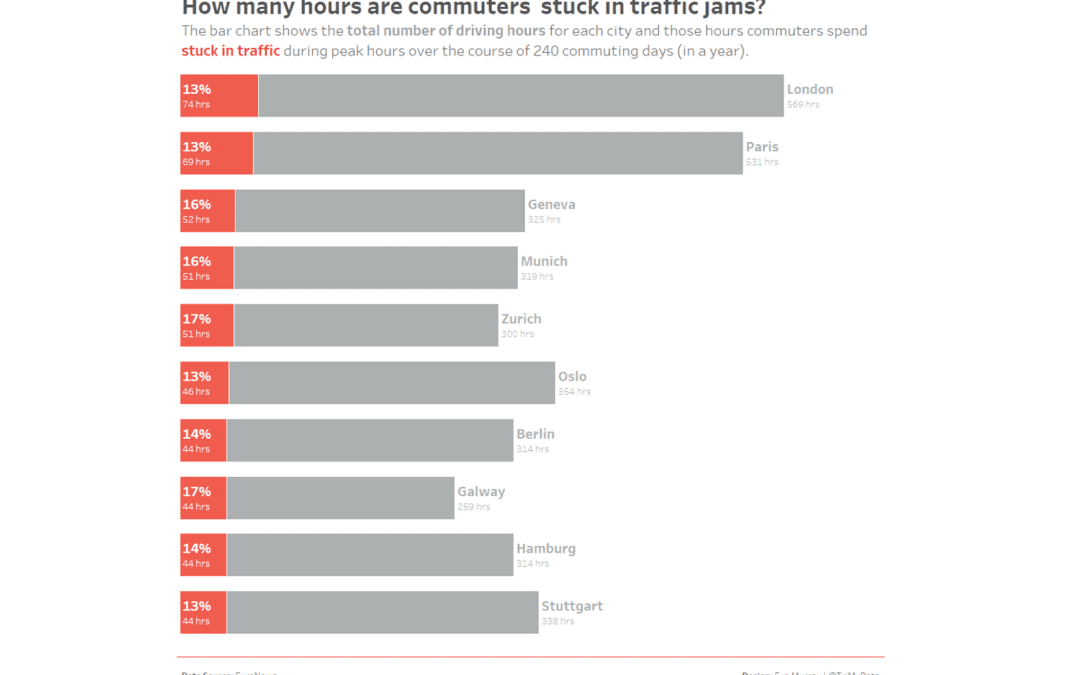Traffic jams are an unpleasant side effect of living in cities and driving cars. After my move to Nuremberg last August, my commute changed significantly. Instead of a frustrating 60min drive each way, I now spend a pleasant 12-14 minutes riding my city cruiser bike to the office. 10min on my race bike. 14 minutes if I carry lots of smoothies in my bag and have to drag myself up the ‘hill’ on the way. There are bike lanes, I could also take a scenic detour along the lake, and by taking backroads I can avoid a bunch of traffic lights.This to me doesn’t even count as a commute. It’s just long enough to put a fresh glow on my cheeks in the morning and mess up my freshly blow-dried hair into a mix of wind-swept and helmet-hair.There are a lot of people, however, who drive to their work every day and spend A LOT of their time stuck in traffic. And that’s the data we’re looking at for Makeover Monday this week.The original visualization comes from EuroNews:
What works well:
- A simple bar chart with clear labels of the bars and the y-axis
- The title is concise and simple, supported by a footnote to clarify how ‘hours in congestion’ is defined
- The source is included
- The measure is very simple: number of hours spent in congestion. Most people, at least those who drive, can relate to it
- Bars are sorted in descending order
What could be improved:
- The colors of the bars don’t have real meaning and instead just differentiate the alternating bars. Color should have meaning or be removed.
- For my liking there are too many gridlines. I’d remove them and put the hour value labels on top of the bars
- The title doesn’t read very well. Congestion seems like a complicated word. Why not just use ‘traffic jam’?
- The shading behind the title is distracting
What I did:
- I felt the hours spent in congestion needed to be seen in the context of the total driving time
- I wanted a simple bar chart because they can be so effective at showing comparisons
- I included a percentage from the original source data to show what proportion of total peak hour driving time is sent in congestion
- I had a good look at the original dataset which has many more cities. Reading the source article ALWAYS helps with getting a better understanding of the background.




Hello Eva,This was a nice presentation.I thought to create the pie chart with each country same as the chart you created. Can you please help me how the total hrs calculated for each Country?S
You can look up the percentages on the original website and calculate the total based on that.